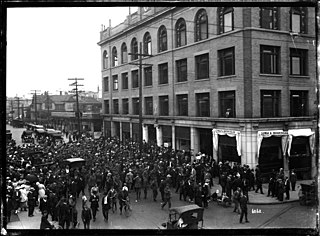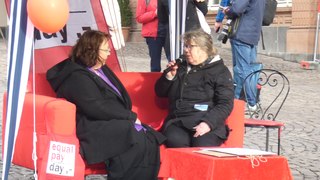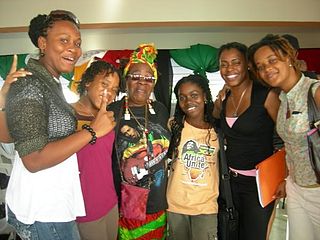
A salary is a form of periodic payment from an employer to an employee, which may be specified in an employment contract. It is contrasted with piece wages, where each job, hour or other unit is paid separately, rather than on a periodic basis. Salary can also be considered as the cost of hiring and keeping human resources for corporate operations, and is hence referred to as personnel expense or salary expense. In accounting, salaries are recorded in payroll accounts.

Australian labour law sets the rights of working people, the role of trade unions, and democracy at work, and the duties of employers, across the Commonwealth and in states. Under the Fair Work Act 2009, the Fair Work Commission creates a national minimum wage and oversees National Employment Standards for fair hours, holidays, parental leave and job security. The FWC also creates modern awards that apply to most sectors of work, numbering 150 in 2024, with minimum pay scales, and better rights for overtime, holidays, paid leave, and superannuation for a pension in retirement. Beyond this floor of rights, trade unions and employers often create enterprise bargaining agreements for better wages and conditions in their workplaces. In 2024, collective agreements covered 15% of employees, while 22% of employees were classified as "casual", meaning that they lose many protections other workers have. Australia's laws on the right to take collective action are among the most restrictive in the developed world, and Australia does not have a general law protecting workers' rights to vote and elect worker directors on corporation boards as do most other wealthy OECD countries.
Equal pay for equal work is the concept of labour rights that individuals in the same workplace be given equal pay. It is most commonly used in the context of sexual discrimination, in relation to the gender pay gap. Equal pay relates to the full range of payments and benefits, including basic pay, non-salary payments, bonuses and allowances. Some countries have moved faster than others in addressing equal pay.
The Equal Opportunity for Women in the Workplace Agency (EOWA) is an Australian government agency. It is a statutory authority located within the portfolio of the Australian Commonwealth Department of Families, Housing, Community Services and Indigenous Affairs (FaHCSIA).

Labor relations or labor studies is a field of study that can have different meanings depending on the context in which it is used. In an international context, it is a subfield of labor history that studies the human relations with regard to work in its broadest sense and how this connects to questions of social inequality. It explicitly encompasses unregulated, historical, and non-Western forms of labor. Here, labor relations define "for or with whom one works and under what rules. These rules determine the type of work, type and amount of remuneration, working hours, degrees of physical and psychological strain, as well as the degree of freedom and autonomy associated with the work." More specifically in a North American and strictly modern context, labor relations is the study and practice of managing unionized employment situations. In academia, labor relations is frequently a sub-area within industrial relations, though scholars from many disciplines including economics, sociology, history, law, and political science also study labor unions and labor movements. In practice, labor relations is frequently a subarea within human resource management. Courses in labor relations typically cover labor history, labor law, union organizing, bargaining, contract administration, and important contemporary topics.
Occupational inequality is the unequal treatment of people based on gender, sexuality, age, disability, socioeconomic status, religion, height, weight, accent, or ethnicity in the workplace. When researchers study trends in occupational inequality they usually focus on distribution or allocation pattern of groups across occupations, for example, the distribution of men compared to women in a certain occupation. Secondly, they focus on the link between occupation and income, for example, comparing the income of whites with blacks in the same occupation.

The Equality Act 2010, often erroneously called the Equalities Act 2010, is an act of Parliament of the United Kingdom passed during the Brown ministry with the primary purpose of consolidating, updating and supplementing the numerous prior Acts and Regulations, that formed the basis of anti-discrimination law in mostly England, Scotland and Wales; some sections also apply to Northern Ireland. These consisted, primarily, of the Equal Pay Act 1970, the Sex Discrimination Act 1975, the Race Relations Act 1976, the Disability Discrimination Act 1995 and three major statutory instruments protecting discrimination in employment on grounds of religion or belief, sexual orientation and age.
The Equality Act 2006 was complemented with specific duties later on. The general Equality Duty states that people should not be discriminated according to their age, race, gender, religion, disability and sexual orientation and required public bodies to take seriously threats of harassment or discrimination on the grounds of gender reassignment.
Gender inequality can be defined as the unequal treatment of individuals based on their gender. Individuals can be marginalised and discriminated from society and be restricted to participate in society due to their gender. Australian women, men, and transgender and non-binary people may all experience aspects of gender inequality. In 2017, Australia ranked as the 35th best country for gender equality.

The Paycheck Fairness Act is a proposed United States labor law that would add procedural protections to the Equal Pay Act of 1963 and the Fair Labor Standards Act as part of an effort to address the gender pay gap in the United States. A Census Bureau report published in 2008 stated that women's median annual earnings were 77.5% of men's earnings. Recently this has narrowed, as by 2018, this was estimated to have decreased to women earning 80-85% of men's earnings. One study suggests that when the data is controlled for certain variables, the residual gap is around 5-7%; the same study concludes that the residual is because "hours of work in many occupations are worth more when given at particular moments and when the hours are more continuous. That is, in many occupations, earnings have a nonlinear relationship with respect to hours."
Gender pay gap in Australia looks at the persistence of a gender pay gap in Australia. In Australia, the principle of "equal pay for equal work" was introduced in 1969. Anti-discrimination on the basis of sex was legislated in 1984.

The Gender Equality Bureau was established in 2001 as a division of the Japanese Cabinet Office tasked with planning and coordinating the policies of the Japanese Government pertaining to gender equality. The Gender Equality Bureau conducts research on topics concerning issues of gender—compiling findings into an annual report called the "White Paper".

The gender pay gap or gender wage gap is the average difference between the remuneration for men and women who are working. Women are generally found to be paid less than men. There are two distinct numbers regarding the pay gap: non-adjusted versus adjusted pay gap. The latter typically takes into account differences in hours worked, occupations chosen, education and job experience. In other words, the adjusted values represent how much women and men make for the same work, while the non-adjusted values represent how much the average man and woman make in total. In the United States, for example, the non-adjusted average woman's annual salary is 79–83% of the average man's salary, compared to 95–99% for the adjusted average salary.

Women in Trinidad and Tobago are women who were born in, who live in, or are from Trinidad and Tobago. Depending from which island the women came, they may also be called Trinidadian women or Tobagonian women respectively. Women in Trinidad and Tobago excel in various industries and occupations, including micro-enterprise owners, "lawyers, judges, politicians, civil servants, journalists, and calypsonians." Women still dominate the fields of "domestic service, sales, and some light manufacturing."

Equal Pay Day is the symbolic day dedicated to raising awareness of the gender pay gap. In the United States, this date symbolizes how far into the year the average median woman must work in order to have earned what the average median man had earned the entire previous year. The exact day differs year by year. In 2022, it was March 15. On average, women earn $0.82 for every dollar men earned in 2019.
Gender equality is the notion that each gender should receive equal treatment in all aspects of life, and that one should not be discriminated based on their sex. Gender equality is a human right, which is recognised under the United Nations Universal Declaration of Human Rights.
The gender pay gap in New Zealand is the difference in the median hourly wages of men and women in New Zealand. In 2020 the gender pay gap is 9.5%. It is an economic indicator used to measure pay equality. The gender pay gap is an official statistic published annually by Stats NZ sourced from the Household Labour Force Survey.
Gender pay gap in India refers to the difference in earnings between women and men in the paid employment and the labor market. For the year 2013, the gender pay gap in India was estimated to be 24.81%. Further, while analyzing the level of female participation in the economy, this report slots India as one of the bottom 10 countries on its list. Thus, in addition to unequal pay, there is also unequal representation, because while women constitute almost half the Indian population, their representation in the work force amounts to only about one-fourth of the total.

Libby Lyons is an Australian former public servant who served as the Director of the Australian Government's Workplace Gender Equality Agency. She was appointed Director in October 2015 and completed her term in April 2021. As Director, Lyons played a key role in promoting and improving gender equality in Australian workplaces.
Nicola Caroline Vincent is an English-born Australian government officer. She is the inaugural Public Sector Gender Equality Commissioner for Victoria, Australia. Prior to this, Vincent was the Commissioner for Equal Opportunity in South Australia (SA) from May 2016 to September 2020.










